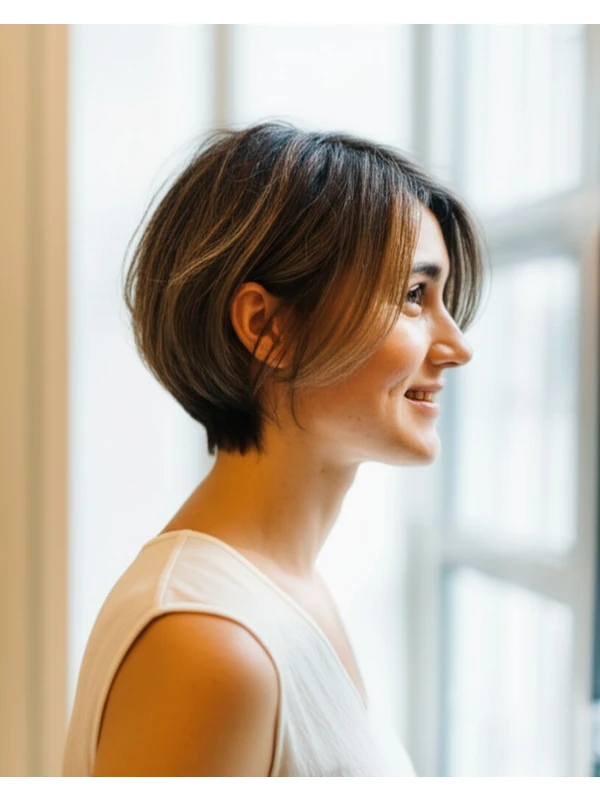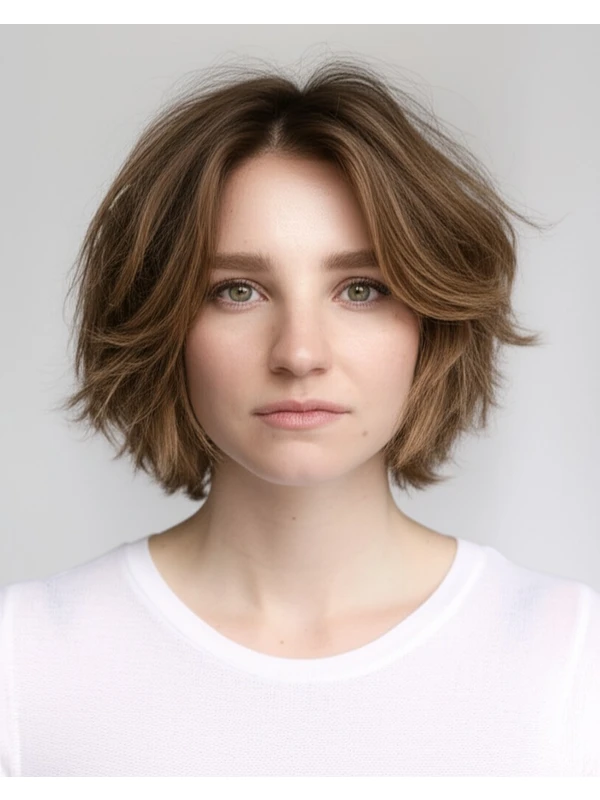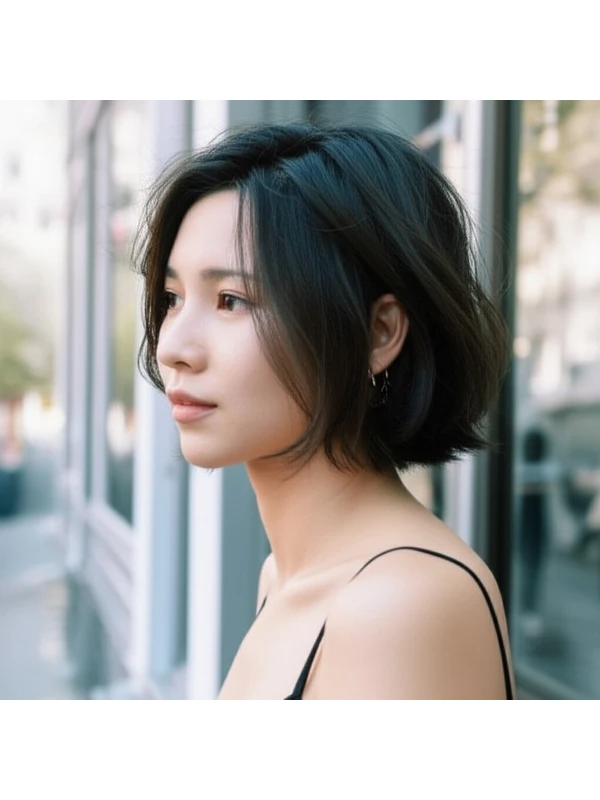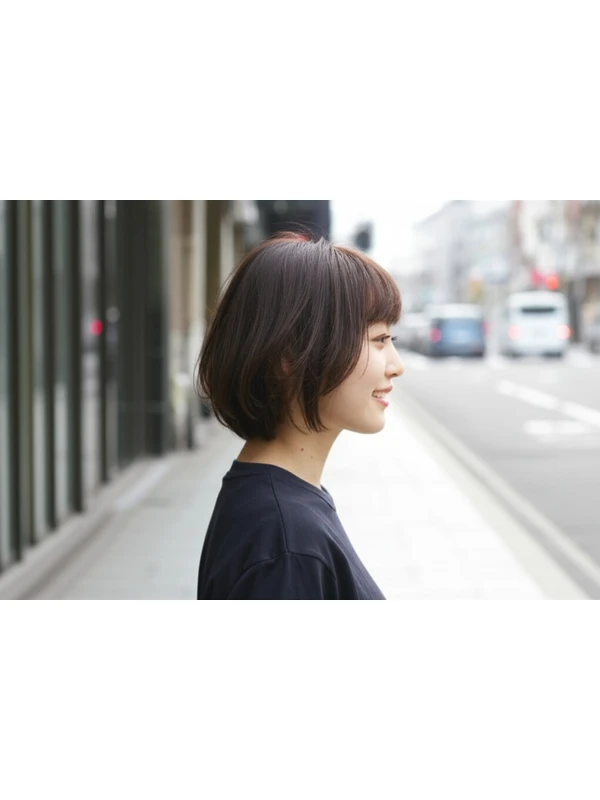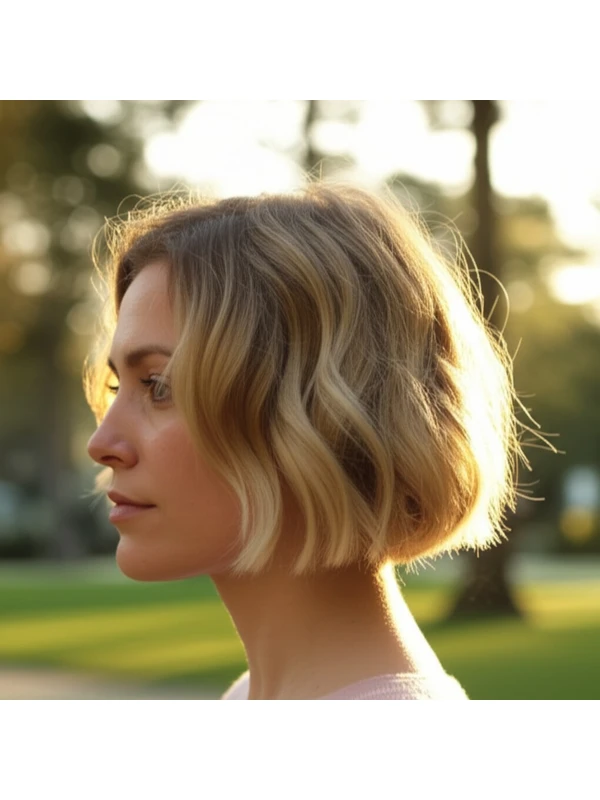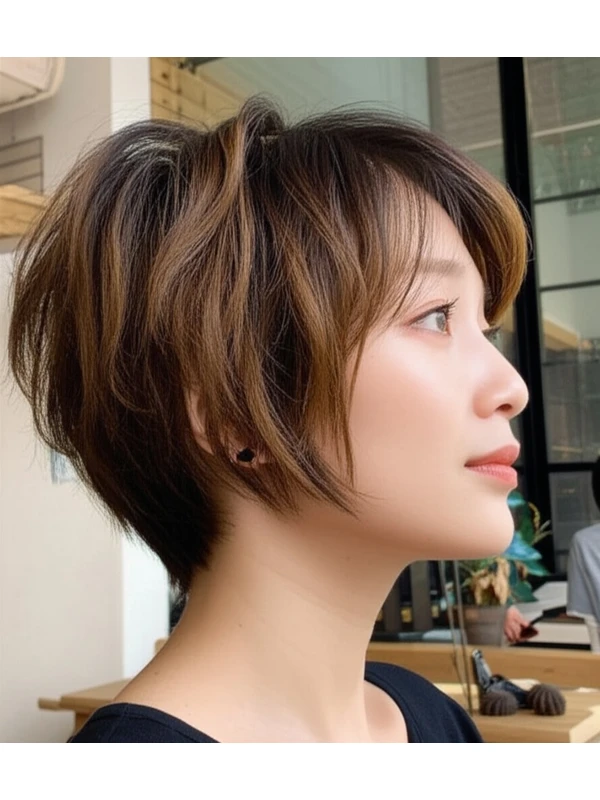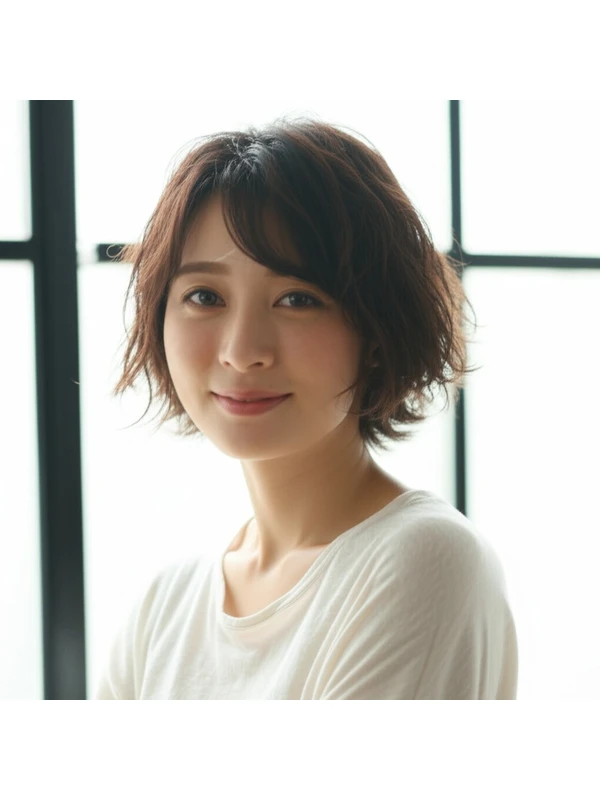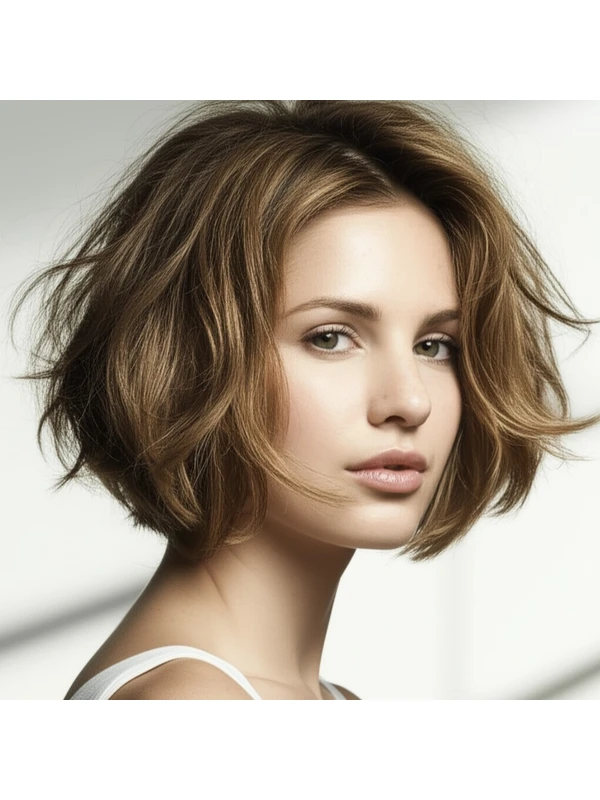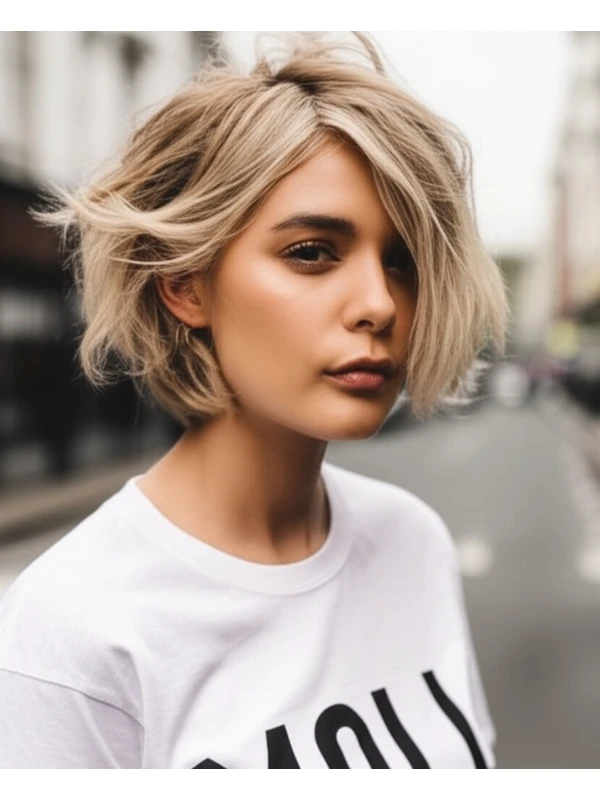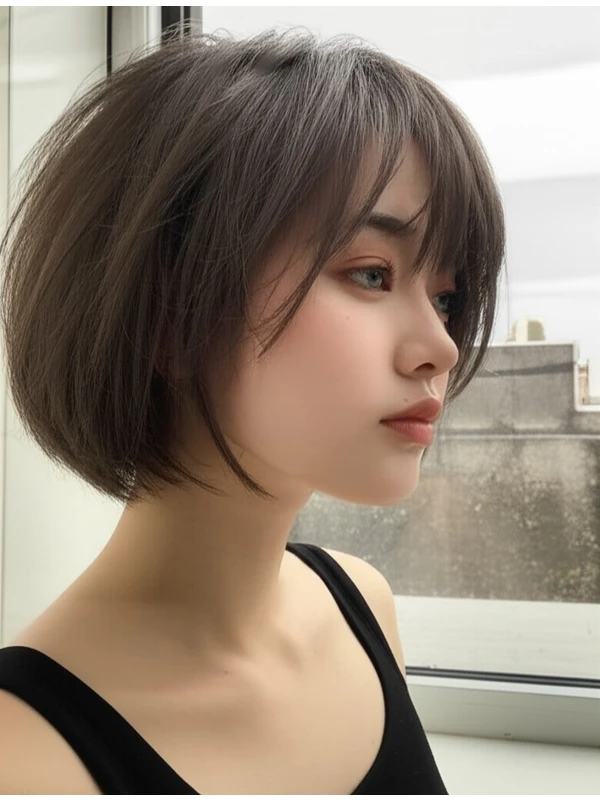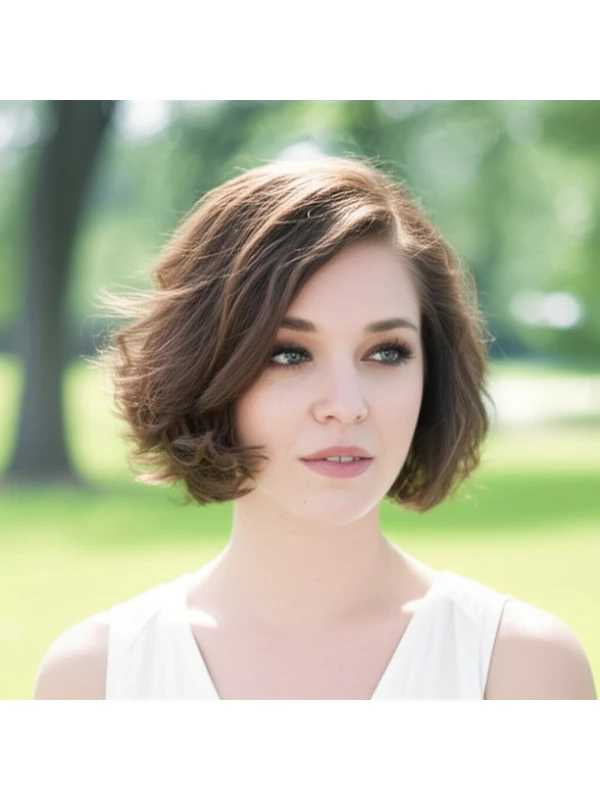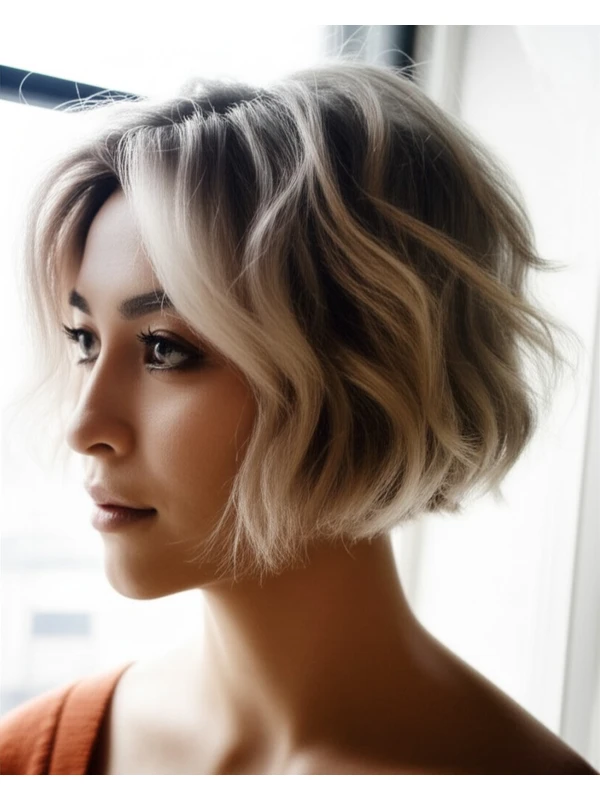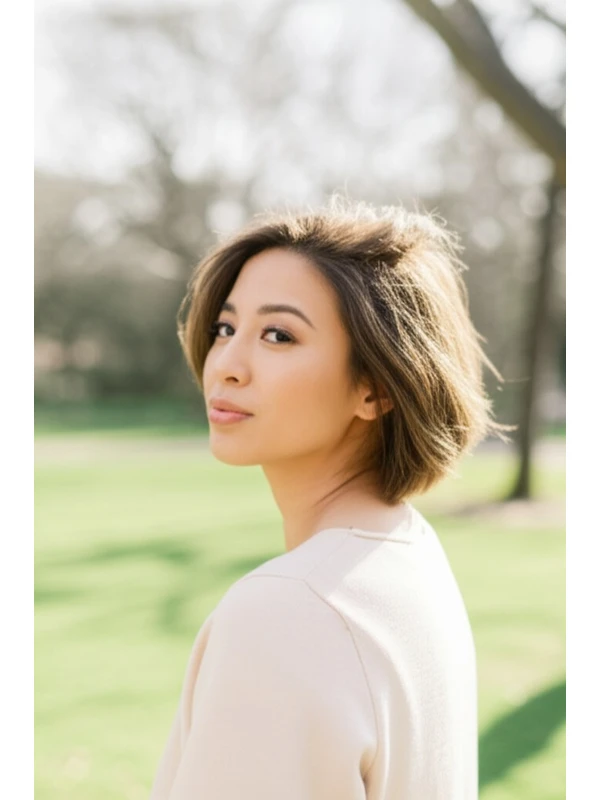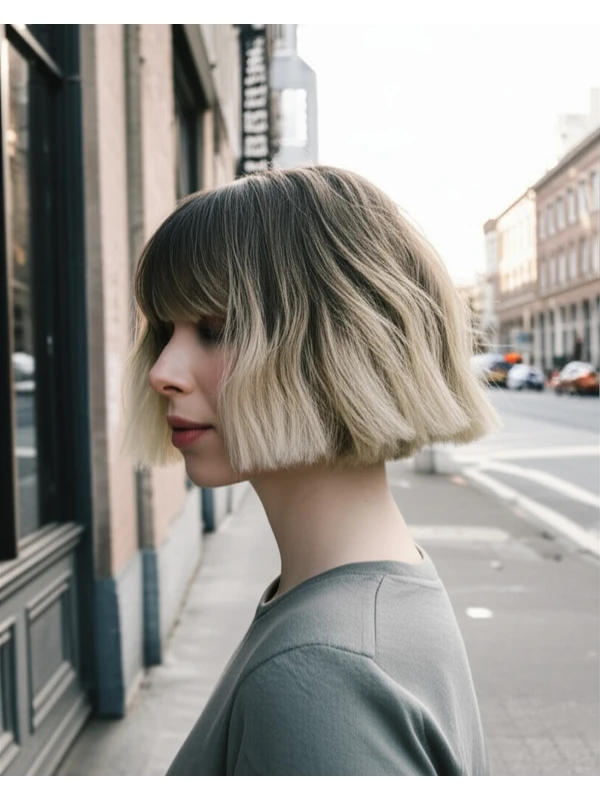#The Soft Curtain Bob: A Guide to Effortless Chic
The soft curtain bob is having a major moment – and for good reason! It’s flattering on so many face shapes and hair types, offering a modern twist on a classic style. But what exactly is it? Let's break down everything you need to know about this versatile haircut.
#1) Background & Definition: What is the Soft Curtain Bob?
The soft curtain bob blends the best of both worlds – the bluntness and structure of a bob with the face-framing softness of curtain bangs. Think of it as a bob that gently skims your collarbone, with layers strategically placed to create movement and highlight your features.
- Cut Geometry: It’s a layered haircut, typically starting shorter at the chin and gradually lengthening towards the shoulders. The key is the soft layering – not harsh angles!
- Key Features: Face-framing layers that blend seamlessly into the bob length; a generally blunt or slightly rounded edge; soft, feathered ends.
- Typical Length Ranges: Usually falls between collarbone length (lob) and just below the shoulders.
- Alternative Names: Curtain Bang Bob, Layered Collarbone Bob, Soft Bob with Face-Framing Layers.
#2) Face Shape Fit: Finding Your Perfect Angle
The beauty of the soft curtain bob is its adaptability. Here's how it works for different face shapes and fringe options to consider:
- Oval: Lucky you! This style looks fantastic on oval faces, highlighting your balanced features. A middle or slightly off-center part works best. Bangs can be full and long or wispy and blended.
- Round: Softening the roundness is key. A longer curtain bob (closer to shoulder length) with angled layers will elongate your face. Avoid blunt bangs; opt for soft, side-swept fringe that starts higher on the forehead.
- Square: The softness of the layers helps soften a strong jawline. A slightly shorter bob with more volume at the crown can balance angles. Curtain bangs should be blended and feathered to avoid harsh lines.
- Heart: A curtain bob draws attention away from a wider forehead and balances a pointed chin. Longer, face-framing layers are essential. Bangs can be long and wispy or side-swept.
- Diamond: This style showcases your cheekbones! A slightly longer bob with soft layering will enhance their shape. Curtain bangs that start higher on the forehead create balance.
- Oblong (Long): Adding width is important here. A chin-length to collarbone-length bob with plenty of layers and volume at the sides creates a more balanced look. Bangs can be full, but avoid anything too wispy as it will accentuate length.
#3) Body Proportions & Height Guidance: Tailoring the Silhouette
The soft curtain bob isn't just about your face; it considers your overall body shape and height!
- Petite: A shorter, chin-length version with minimal layering prevents you from being overwhelmed by the style.
- Average: This is a sweet spot for most people – shoulder length or slightly longer works beautifully.
- Tall: A longer bob (just below the shoulders) adds visual weight and balances your height.
- Narrow Shoulders: Layers around the face add width, creating balance. Volume at the crown also helps.
- Broad Shoulders: Keep the layers soft and flowing to avoid adding extra visual width. Avoid too much volume on top.
- Short Neck: A slightly shorter bob with a more angled front will elongate your neck. Avoid overly long styles that can make your neck appear shorter.
- Long Neck: Longer curtain bobs work well, as they add visual mass and balance the length of your neck.
#4) Works Best With Hair Types & Densities: Finding Your Match
The soft curtain bob is surprisingly versatile but understanding how it interacts with different hair types is key!
- Straight Hair: The layers will create beautiful movement and shine. Consider a texturizing product to enhance the softness.
- Wavy Hair: This style enhances natural waves, creating effortless texture. Be sure your stylist understands how your hair's wave pattern behaves when cut dry.
- Curly/Coily Hair: While possible, it requires careful planning and consideration of shrinkage! A longer length is often best to accommodate curl patterns. Communicate clearly about desired curl definition versus volume. Shrinkage can be significant – a style that looks chin-length wet might end up much shorter when dry.
- Fine Hair: Layers add the illusion of thickness, but too many layers can make hair look even thinner. Focus on strategic face-framing and subtle layering.
- Medium Hair: This is ideal! The soft curtain bob will enhance your natural density.
- Thick Hair: Thinning shears can help reduce bulk while maintaining volume.
#5) Styling Variations: From Casual to Chic
The beauty of this style lies in its adaptability.
- Sleek vs Textured: A sleek look uses a smoothing serum and a flat iron for a polished finish. A textured look embraces natural waves or curls, using texturizing spray or mousse.
- Middle vs Side Part: Middle parts create symmetry; side parts add softness and asymmetry.
- Fringe Variations: Full curtain bangs, wispy curtain bangs, blended curtain bangs – the possibilities are endless!
- Occasion Styling: For casual days, air-dry with a texturizing product. For the office, smooth it out with a straightener. For evening events, add waves or curls using a curling iron or hot rollers.
#6) Maintenance: Keeping Your Bob Beautiful
Consistent care is key to maintaining your soft curtain bob's shape and health.
- Trim Cadence: Every 6-8 weeks for most hair types; more frequently if you have curly/coily hair.
- At-Home Routine: Gentle shampoo & conditioner, weekly deep conditioning treatment (especially important for dry or damaged hair).
- Heat vs Air-Dry: Minimize heat styling whenever possible! Air drying is healthiest.
- Product Checklist:
- Shampoo and Conditioner (suited to your hair type)
- Leave-in Conditioner (for moisture and detangling)
- Heat Protectant (if using hot tools)
- Texturizing Spray or Mousse (for added volume/texture – optional)
- Finishing Serum or Oil (to smooth flyaways and add shine)
- Estimated Daily Styling Time: 5-15 minutes, depending on desired style.
#7) Grow-Out Roadmap: Embracing the Evolution
The soft curtain bob evolves beautifully as it grows out.
- Months 1-3: The shape is at its most defined. Regular trims are essential to maintain the bluntness and layers.
- Months 4-6: Layers start to blend more seamlessly, creating a softer look. Bangs can be styled in different ways (longer, shorter, side-swept).
- Maintaining Shape: Ask your stylist for tips on how to style your hair between cuts to keep it looking its best.
#8) Color Pairings: Enhancing Your Look
Color can elevate the soft curtain bob!
- Cool Undertones (pink, blue): Ashy blondes, cool browns, and even subtle lilac tones work beautifully.
- Warm Undertones (yellow, gold): Honey blondes, caramel highlights, copper reds – embrace those warm hues!
- Low-Commitment Options: Balayage or babylights can add dimension without a drastic color change.
#9) Season & Occasion Guide: Adapting to the Moment
- Spring/Summer: Embrace lighter textures and brighter colors. A beachy, textured look is perfect for warm weather.
- Fall/Winter: Add warmth with richer tones and deeper layers. Sleek styles are ideal for more formal occasions.
- Work: Neat and polished – a smooth style or gentle waves work well.
- Weddings: Soft curls and romantic styling create an elegant look.
- Parties: Experiment with bolder colors, textured styles, or statement accessories.
#10) Cost & Time: Salon Investment
- Salon Time: Typically 1-2 hours, depending on hair length, density, and desired style complexity.
- Price Range: Expect to spend a moderate amount – generally more than a simple trim but less than a complex color treatment.
#11) Pros & Cons: The Trade-Offs
Pros: Flattering for many face shapes; versatile styling options; modern and chic look; relatively easy to maintain (with regular trims). Cons: Requires regular trims to maintain shape; can be time-consuming to style if you want a very specific look; may not work well with all hair types without adjustments.
#12) Salon Consultation Script: Your Questions Answered
Use these prompts when talking to your stylist!
- "I'm interested in a soft curtain bob. Can you show me some examples?"
- "What length would be most flattering for my face shape and features?"
- "How can we incorporate layers to balance [mention specific concern, e.g., roundness of face, broad shoulders]?"
- “Can we discuss how the bangs will frame my face?”
- "I have [hair type]. How should that influence the cut and styling?"
- "What products would you recommend for maintaining this style at home?"
#FAQs: Your Burning Questions
- Is a soft curtain bob hard to style? Not necessarily! It can be styled in many ways, from air-dried to sleek with heat.
- Can I get a soft curtain bob if my hair is very thick? Yes, but thinning shears might be needed to remove bulk and prevent the cut from looking too heavy.
- What if I don’t like bangs? You can opt for longer, blended layers that mimic the look of curtain bangs without fully committing.
- How do I avoid a "triangle" shape with this bob? Communicate clearly with your stylist about desired length and layering – they should be able to create a balanced silhouette.
- Can I dye my hair a bold color with this cut? Absolutely! But consider how the color will interact with the layers and face-framing pieces.
- Is there anything I need to do to prep my hair for the appointment? Wash your hair as usual, but avoid heavy styling products. It’s helpful if your stylist can see your natural texture.

